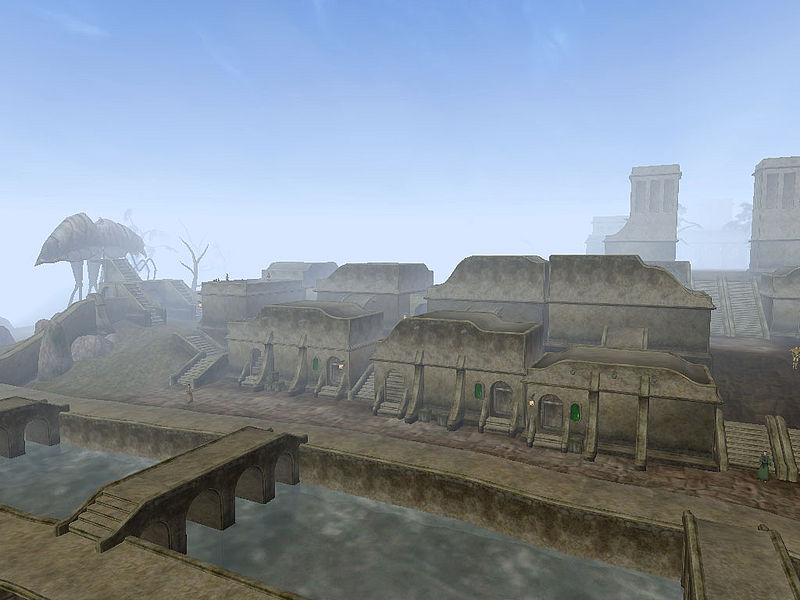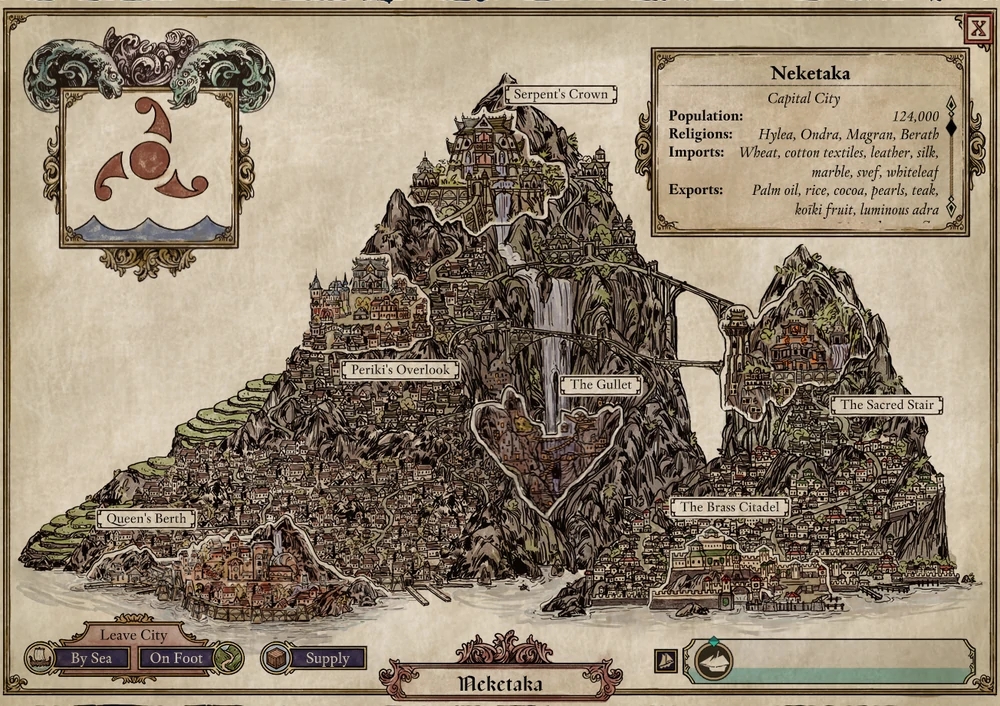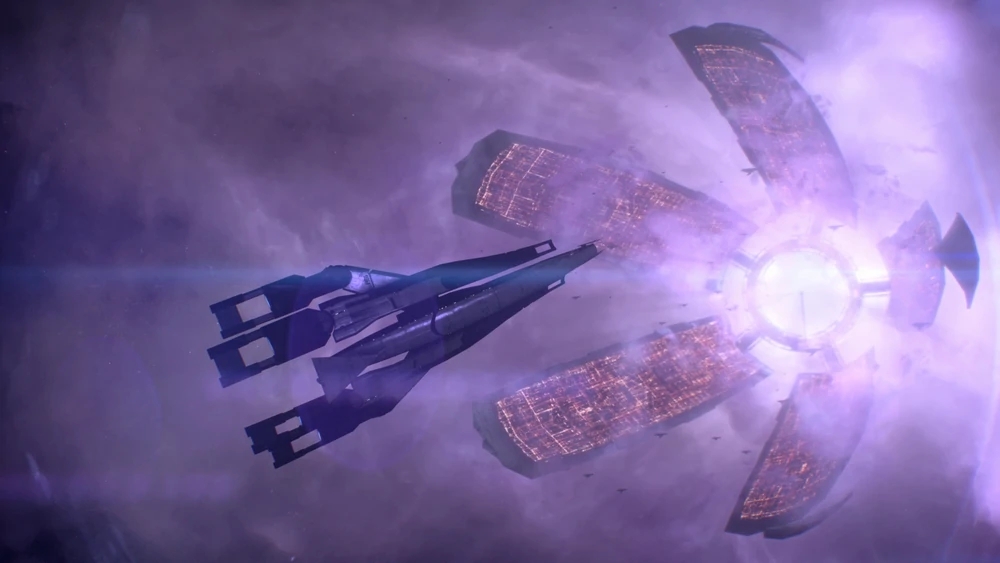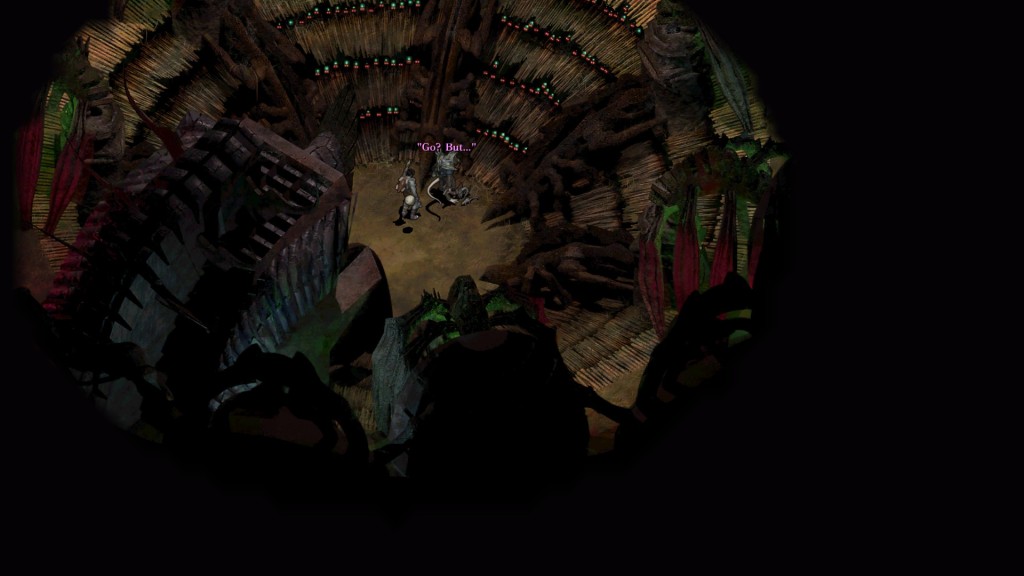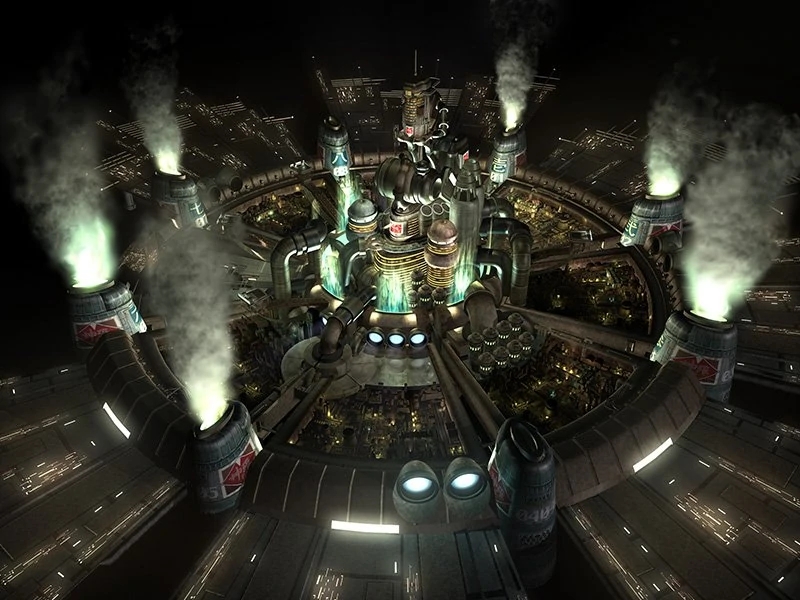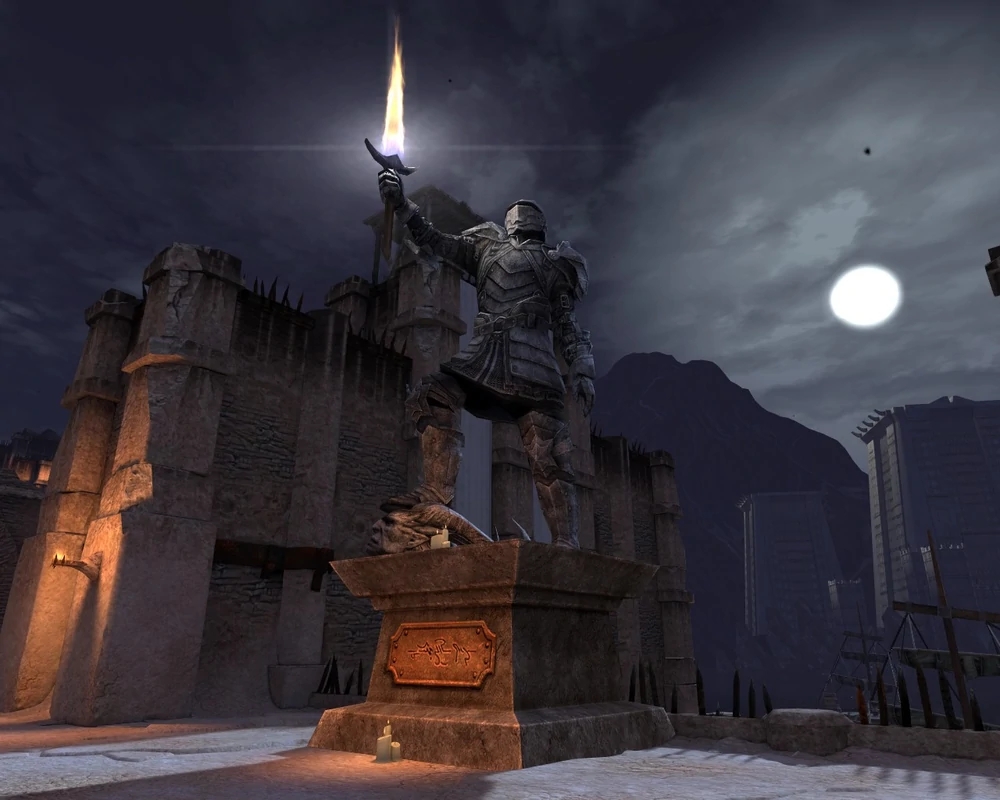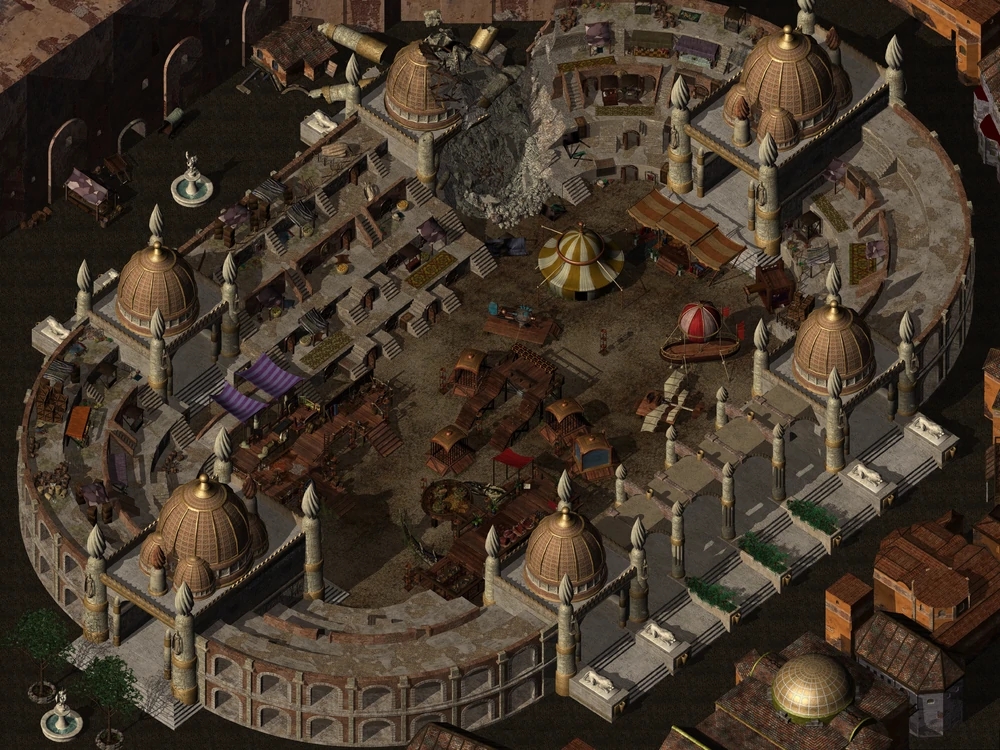There comes a point in almost every RPG when you have to leave the lush countryside behind and journey into the big city. It can be a point where the action ramps up, replacing the low stakes and simple good against evil storytelling of the early levels with moral complexity and hard choices. It can be a change of pace, switching focus to intrigue or character building. Or it can even be a small reprieve from all the action. What it rarely is however, is boring. Cities are a wonderful opportunity for video game designers to showcase what they are capable of, packing vast amounts of content into a much smaller space and time frame. And what better way to showcase that than with a top 20 list? Ordered from best to bestest, here are the 20 greatest cities in RPG history:
20.Barcelona-Lionheart:Legacy of the Crusaders
©Interplay Entertainment, via GOG.com
This is perhaps the only city on this list that can be said to be more famous than the game it’s actually from. Mostly because it’s a real life city in Spain, visited by millions of tourists every year. But also because Black Isle’s rather obscure 2003 title is just… not a very good game. Or rather, it’s a third of a very good old school RPG awkwardly attached to two thirds of a mediocre Diablo clone. So what makes it’s alternate history version of Barcelona so great? Well, for starters, it’s where all the good parts of the game take place. This is where you meet an all star cast of slightly anachronistic historical figures such as Leonardo Da Vinci or Miguel de Cervantes and get dragged into a power struggle between the Knights Templars and the Spanish Inquisition(who could have seen that coming) that’s even more complex that it seems on the surface. You can even solve a few murders with mystical undertones. Or you can simply run around the sewers, killing monsters. Barcelona is the quintessential RPG city, but what truly makes it stand out is not just the cool alt history setting, or the highly detailed-for 2003-rendering, but also the huge contrast it provides to the rest of the game.
19.Taris-Star Wars:Knights of the Old Republic
KOTOR is old, but the backgrounds and buildings have aged a bit better than the fashion choices
From a technical standpoint, Taris really isn’t much. A handful of small buildings, split between an upper level and a seedy underbelly, the classic sewers, and an “open” underground area that’s about the size of my backyard. But the real gem here is what Bioware were able to do with such limited resources. Not only does Taris actually feel like a believable cross-section of an ecumenopolis-a planet wide city, for those of you who aren’t giant sci-fi nerds, but it also makes you grow attached enough to it in the 5 hours or so before it’s(spoilers for the opening section of a 20 year old game) blown up that the emotional punch totally lands. That’s no small feat to accomplish basically through writing alone.
18.Harbour Town-Risen
Although quite picturesque at times, Risen was unfortunately a victim of gaming’s brown period
I’ve always been a sucker for pirate themed adventures, and I happen to think nautical fantasy in general is a woefully underutilized setting in the gaming space, particularly when it comes to RPGs. Although Risen is quite a bit more on the traditional fantasy side, at least compared to it’s sequels, it’s vaguely Mediterranean looking island setting is nevertheless both refreshing and rather unique. And the center piece of this setting is Harbor Town. Everyone that has played a Piranha Bites game before can tell you that it’s size is deceptive, as there’s more content here than in some full games. Every single NPC comes with their own backstory, relationships and problems. Every nook and cranny is lovingly hand crafted with an eye for both realism and excitement. More than almost any other city on this list, Harbour Town feels like a real place, where actual people live, rather than a theme park for the player character to run around in.
17.Verdistis-Divine Divinity
©Larian Studios
It might not be the largest city on the list, and it’s certainly not the prettiest, but Verdistis does have it’s charms. It’s among the most densely packed on the list for one, with every building and nearly every NPC being associated with a quest line of some sort. It’s also one of the rare examples of a large combat free area that works in an otherwise very combat focused hack and slash game. It’s a nice change of pace, and lovingly crafted, even if it doesn’t exactly break the mold.
16.New Reno-Fallout 2
©Interplay Entertainment
In the same vein as the previous entry, New Reno isn’t exactly a place to get lost in, nor is it gonna win any beauty contest. But in this case, both of these are a very deliberate design element. You see, both in universe and as part of a video game, New Reno is a grotesque approximation of a real city, a facsimile that can only fool the least perceptive onlookers. All the parts are there, but in the wrong amounts, and you can’t shake the feeling that something is wrong. What’s wrong of course, is that New Reno is a town that’s entirely seedy underbelly, with no functioning police force, no law abiding citizens, and effectively no rule of law of any kind. It’s pure chaos, a no man’s land in metropolis form. That such a ridiculous concept can work in a relatively grounded universe is a huge testament to the writing and design team at Black Isle.
15.Anachronox-Anachronox
©Square Enix
It’s a city, on an artificial planet, built atop a natural planet, all inside another artificial planet. What more could you want?
14.Lindblum-Final Fantasy IX
©Square Enix
From the hellish post apocalypse, we go right into the idyllic faux medieval European/light Steampunk of Final Fantasy IX’s Lindblum. Even though it’s about as old as all the previous entries on the list, thanks to the pre-rendered graphics and amazing art direction, Final Fantasy IX can punch well above it’s weight class, and the city’s beauty holds up even today, to some extent. Of course, it’s not as detailed or gritty as it’s western RPG contemporaries, but sometimes, that’s a good thing. It’s easy to forget that games are meant to be an escape from the grim realities of our world, rather than exaggerated reproductions of all our ugliest tendencies.
13.Tarant-Arcanum
©Troika Games, via GOG.com
Although it has a similar steampunk/medieval aesthetic as the previous entry, Tarant could not be more different. It’s an ugly city, and not because of the simple, utilitarian graphics or boring grid base layout. Arcanum’s largest town is ugly in a very real way, filled with stories of injustice, racism and suffering. Despite being set in a decidedly fantastical world, the struggles of it’s denizens are very real, and not far removed from those of the inhabitants of the Victorian era London that it’s obviously modelled on. New Reno may be grittier, and Taris may be more doomed, but the story of Tarant is a more poignant tragedy simply because, at least in universe, it’s not presented as one. It’s meant to be the largest and most successful settlement on the entire continent, with all that entails. It’s a place where the rich thrive and the poor suffer, where obscene wealth is juxtaposed with extreme squalor. It’s the kind of setting that really makes me wanna break out the thesaurus to describe it.
12.Orgrimmar-World of Warcraft
©Activsion Blizzard
Roughly half my audience have started furiously typing in the comments at this point, but the truth is, this really isn’t an Alliance vs Horde thing. Although Stormwind is equally iconic, and Dalaran or Silvermoon might be more beautiful, Orgrimmar is the only one that belongs here, for the simple fact that it’s iconic design truly belongs to Warcraft. WOW is one of the most influential video games ever made, and it’s design and look has been replicated to death by hundreds of other MMOs and RPGs. But the one aesthetic element that no one else has been quite able to get right is the design of the Orcs capital. It’s mix of high tech and primitive, civilization and anarchy, beauty and ugliness that somehow works, and it’s one of the most memorable and instantly recognizable sights in video game history.
11.Beauclair-The Witcher 3:Blood and Wine
©CD Projekt
Although the Witcher franchise has it’s fair share of iconic cities, none of them can really be compared to Beauclair. I could have went with Vizima, which is a far more interesting setting for a story, or Novigrad, which is much larger and more fleshed out, or even Kaer Trolde, with it’s breathtaking landscapes. But instead, I chose Beauclair, for the simple reason that it’s, perhaps more so than any other city on this list, simply gorgeous. The Witcher 3 is 7 years old at this point, but it’s still stunningly beautiful at times, and the capital of Toussaint really pushes it to its limit. From the fairy tale palace, down to the slightly run down but still luxurious vineyards, every inch of the city is brimming with life and charm. In a franchise that’s so overwhelmingly dark and dreary, it’s nice to see the artists let loose with a bit of color.
10.Neverwinter-Neverwinter Nights Franchise
©Wizards of the Coast
I might be somewhat cheating here by including three different versions of the same city(well, four if you count the very graphically limited 1991 OG Neverwinter Nights), but although the layout changes through the years, the history of the city remains the same. The real strength of Neverwinter is it’s sense of legacy, of watching countless parties of adventurers take to its streets as low level wimps, saving the realms and retiring as near gods. Hundreds of battles have been fought here, and the city has endured through dozens of crises. But whether you’re fighting the Wailing Death in 2003 as a child, or rebuilding it with your friends in the wake of a volcanic eruption as an adult, for fans of the franchise, Neverwinter will always feel like home.
9.Imperial City-The Elder Scrolls IV:Oblivion
©Bethesda Softworks
It’s easy to look now at what’s supposed to be the capital of a continent spanning empire and laugh. For all it’s importance in the lore, and the reverence it’s treated with by the game’s characters, the Imperial City is, at it’s core, a beautiful skyline and a handful of buildings, split into six laughably small districts. But I can’t even begin to explain what it meant in 2006. Towering over the entire province of Cyrodiil, and visible for basically the entire game’s runtime, the Imperial City seemed at once incredibly large, and impossibly detailed, with graphics far beyond what I thought computers were capable of(and sadly, beyond what my own PC could muster). Though it’s technical accomplishments have long ago been overtaken by its younger peers, the Imperial City nevertheless remains a feat of fantasy architecture, with a silhouette that’s instantly recognizable.
8.Baldur’s Gate-Baldur’s Gate
©Interplay Entertainment
For many readers, this is no doubt where it all began. Baldur’s Gate’s release in 1998 was a seminal moment for western RPGs, and every moment of it has been dissected, analyzed and replicated, with varying degrees of success. The eponymous city is no different, with its layout and role in the narrative serving as a blueprint for countless future RPGs. From its neatly delineated districts, to its inexplicably dangerous sewers, Baldur’s Gate’s DNA is clearly present in some form in most of the cities on this list. And although its design is inelegant and archaic, and its age is starting to show, there’s still very little that comes close to that moment of entering the city gates for the first time, and leaving the green fields and meadows of the first few hours of the game behind.
7.Balmora-The Elder Scrolls III

orrowind
©Bethesda Softworks, via UESP
At first glance, Balmora hardly seems like the most impressive city in Morrowind. It’s not as large and sprawling as Vivec, nor is it as unique and interesting as Ald’Ruhn or Sadrith Mora. It’s in fact a pretty simple looking mid-sized town. But it’s exactly in that relative simplicity that the attraction lies. In an uncompromisingly alien and hostile game, Balmora is a welcoming oasis. The beautiful ambience, with the intermittent cries of the Silt Strider and the rain hitting the simple stone buildings, is almost serene. The interiors are surprisingly large and labyrinthine, with entire levels hidden beneath the ground. And the iconic layout, with mirrored city districts on two river banks, makes it at once easy to navigate once you get the hang of it, and slightly disorienting for newcomers. Perhaps better than any other place in Morrowind, Balmora strikes the perfect balance between novelty and familiarity. It is at once too interesting to be boring, while not being weird enough to be off-putting.
6.Neketaka-Pillars of Eternity II: Deadfire
©Obsidian Entertainment
In an earlier entry ,I’ve talked about my love of nautical fantasy, so it should come as no surprise that I absolutely adore Pillars of Eternity II, as well as the centerpiece of it’s campaign, Neketaka. Although obviously inspired by early Bioware and Black Isle titles, like much of the rest of the game, thanks to modern technology, it can go places those older classics couldn’t, both in terms of visual spectacle as well as size and scope. Built on terraces carved into a giant mountain, and inspired by a mixture of Native American, Polynesian and South East Asian architectural styles, Neketaka is brilliant in concept and flawless in execution.
5.The Citadel-Mass Effect Franchise
©Bioware
Is the Citadel a city? Its certainly city-like, and it has the population of New York, so you can’t exactly call it anything else, but its also in space, and technically both a weapon
and a portal. I have no idea what the answer to this philosophical question is, but nevertheless, on a meta-textual level, it serves the same purpose as all the other cities on this list, so, we’ll just call it a city. In any case, it’s a melting pot of the galaxy’s most interesting denizens, built atop a mysterious space structure of ancient origins. Interesting things are bound to happen here, and they do. Although you don’t really get to explore a huge section of it in any of the 3 games, the small glimpses you are given provide some fascinating insights into the inner life of the gargantuan space station.
4.Sigil-Planescape Torment
Peace negotiations with a hive mind of genius rats? Just another Tuesday in Sigil.
Setting a whole RPG campaign within the confines of a single city is a risky move. Doing it when you have neither the technical resources nor the budget to actually create a sprawling city, that’s straight up
ballsy. Black Isle made it work though. Although the idea of Sigil, a giant, non euclidean interdimensional hub of a city where people are teleported at random from the farthest corners of the multiverse, is mostly suggested rather than shown, it’s done so in such an inventive manner that you can hardly tell that you’re not seeing much. With minimalistic grace, the developers manage to sketch out a handful of areas and a small cast of characters which really make you feel like you’re exploring a world of infinite possibilities. And it’s not hard to see why, when, for instance you’re in a bar that’s built around a wizard that’s perpetually burning (though, naturally, you can recruit the wizard, leaving the bar without it’s heater/lamp/conversation piece). Or when you have a very pleasant conversation with a talking, sentient street(no, not
that one). Despite the obvious limitations it was built under, Sigil remains one of the most interesting places in video game history.
3.Midgar-Final Fantasy VII
©Square Enix
At first, Midgar doesn’t seem to have much in common with our real world cities. Its completely unfamiliar and fantastical in its architecture, its powered by a magical element called Mako, and its inhabited by improbably strong boy band members. But the more you learn about Midgar, the more you realize that the problems that plague it are of a tragically familiar nature. Human greed, corruption, and plain old indifference are the main foes here, there’s no dragons or monsters in sight(not yet, anyway). Final Fantasy VII is very blunt in it’s presentation of Midgar, with the rich upper districts literally rising above the impoverished slums, and keeping them in perpetual darkness(although, in a nice piece of cinematic storytelling, the upper city is always set at night time, while the slums are bathed in daylight). The giant city literally saps the life around it, like an ecological vampire. Some might call this type of storytelling inelegant, but it gets the point across.
2.Kirkwall-Dragon Age 2
©Bioware
Sometimes setting your entire campaign inside a single city works out marvelously. Other times, it really doesn’t. Probably because in this case, it was less of a ballsy creative decision, and more of a necessity of working under an incredibly strict time limit. But whatever flaws Dragon Age 2 might have, it still gave us one hell of a city to explore. Through the 7 year narrative of the campaign, you get to climb the social ladder, from penniless refugee to decorated hero, and watch the entire city grow with you. The real magic here is that Kirkwall is as much your main character as Hawke, and whatever decisions you end up making impact both of them equally. Kirkwall is special because you get an entire extra dimension to explore it in: time. Most of the other places on this list are more or less static, even across multiple franchises, and even if they do change, its because of things that are outside your control. By contrast, Dragon Age 2 puts you in charge of an entire city’s destiny, and setting aside its mediocre combat and scaled back RPG elements, deserves to be applauded for it.
1.Athkatla-Baldur’s Gate 2: Shadows of Amn
©Bioware
You walk into a tavern. In a back room, behind an inconspicuous wall, you find a secret door. You open the door and walk into an underground passage that leads to a vast, buried city. You explore the city for hours until you enter what seems like an important building. Inside, you find a lich. Your level 4 party is instantly wiped out. It sounds like one of those DnD scenarios that are forever relegated to the realm of pen and paper. There’s no way any video game will ever be able to pull something like this off, right? Well, Baldur’s Gate 2 did it 20 years ago. Athkatla is both impossibly large, and filled with adventure at every corner. The sheer variety on display here is a feat that has, somehow, not been matched by any single other game I’m aware of. Visit a crash landed magical spaceship. Solve a murder. Go tomb raiding with a cantankerous dwarf. Whatever activity you can imagine, Athkatla provides. Most importantly though, it’s truly a place you can get lost in. And I don’t mean in the geographical sense. You can spend hours wandering around the city, taking in the sights and the sounds, or knocking over every loose stone looking for adventure. It’s the epitome of everything a city should be in an RPG, and I can’t wait for the day it will be, if not dethroned, then at least equaled by something else.
Honorable mentions:
Night City-Cyberpunk 2077
I haven’t played Cyberpunk yet, apart from a few hours at a mate’s desk, and I do not intend to do so until I’m satisfied that the game is complete(and at the current pace things are progressing, it might take a while). Even though Night City looks great, I can’t in good conscience recommend it until I’ve adequately explored it myself.
Anor Londo-Dark Souls 1/3
If this was strictly a matter of architecture, Anor Londo would certainly be somewhere near the top. As it stands though, this is a list of living, functional cities, so the mostly abandoned and hostile citadel sadly doesn’t qualify.
Rapture-Bioshock
Although Rapture is among my favorite settings in any video games, and Bioshock does have some RPG elements, its mostly a shooter at heart, and ultimately doesn’t belong here.







![Glory to Codexia! [2012] Codex 2012](/forums/smiles/campaign_tags/campaign_slushfund2012.png)











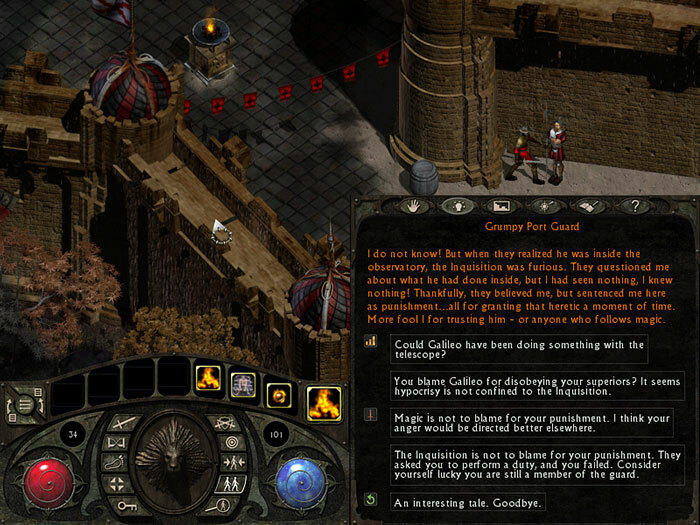
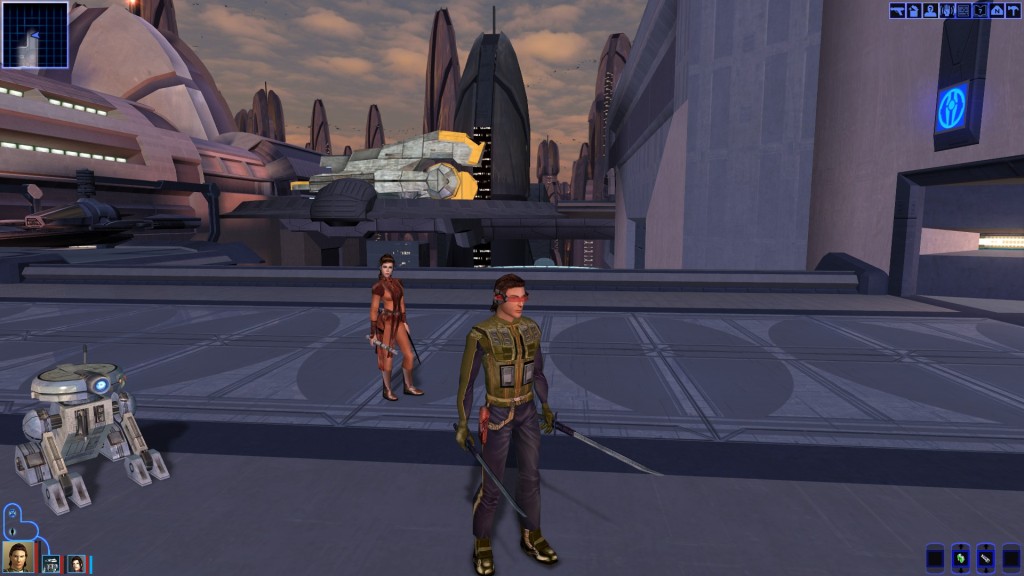
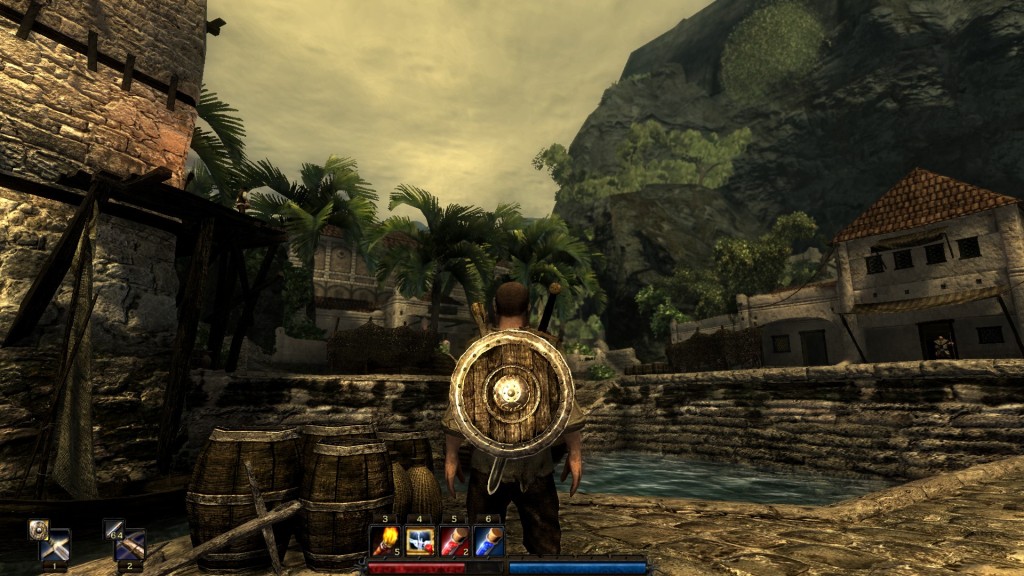
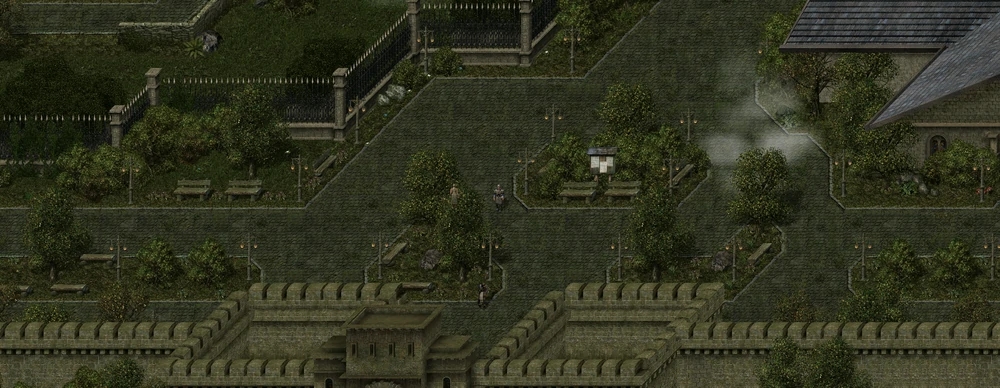
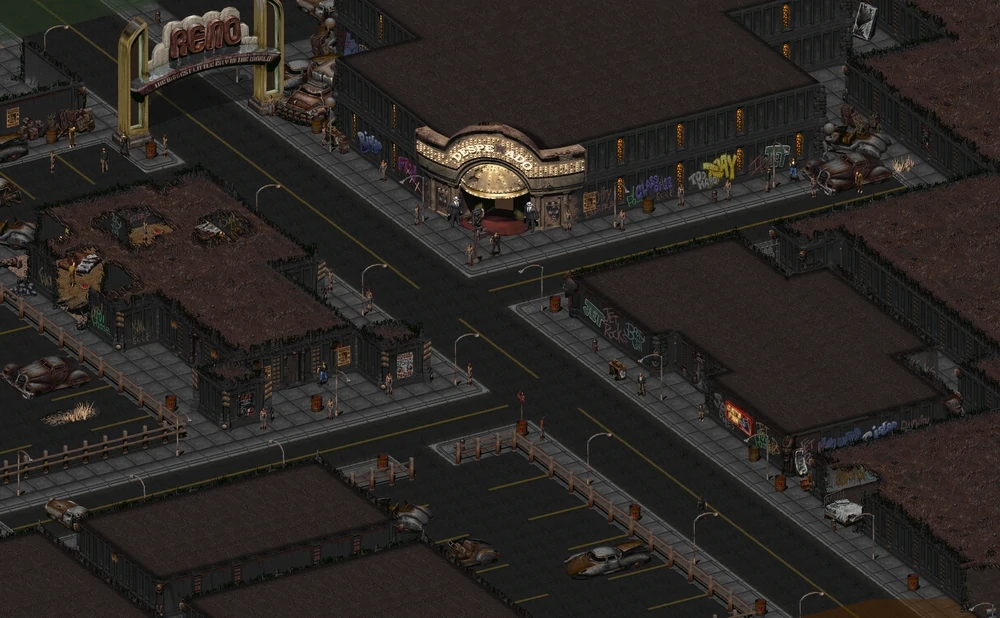
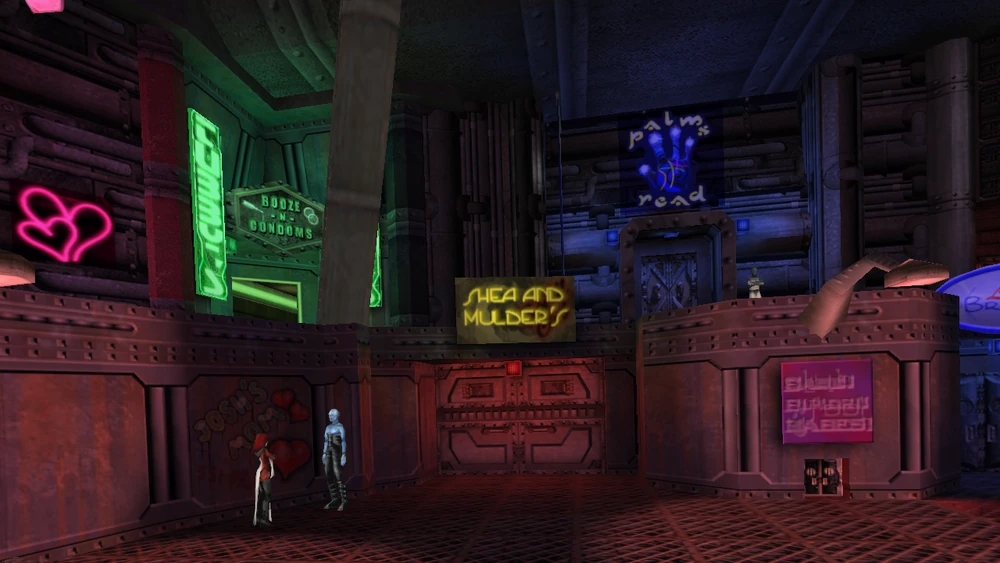
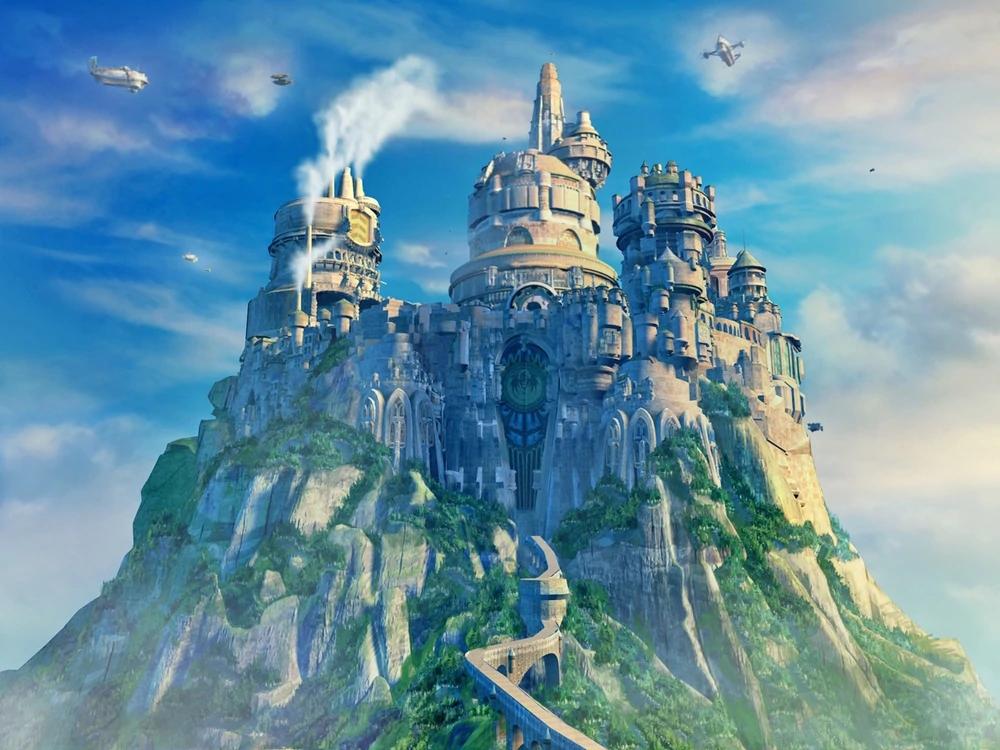
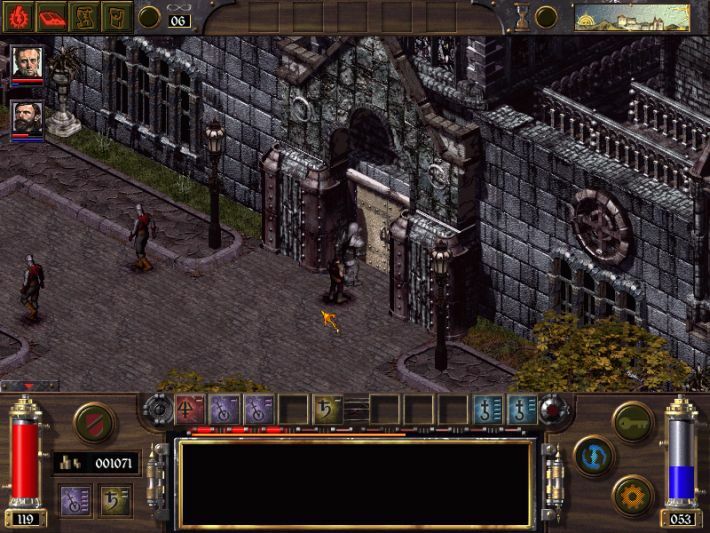
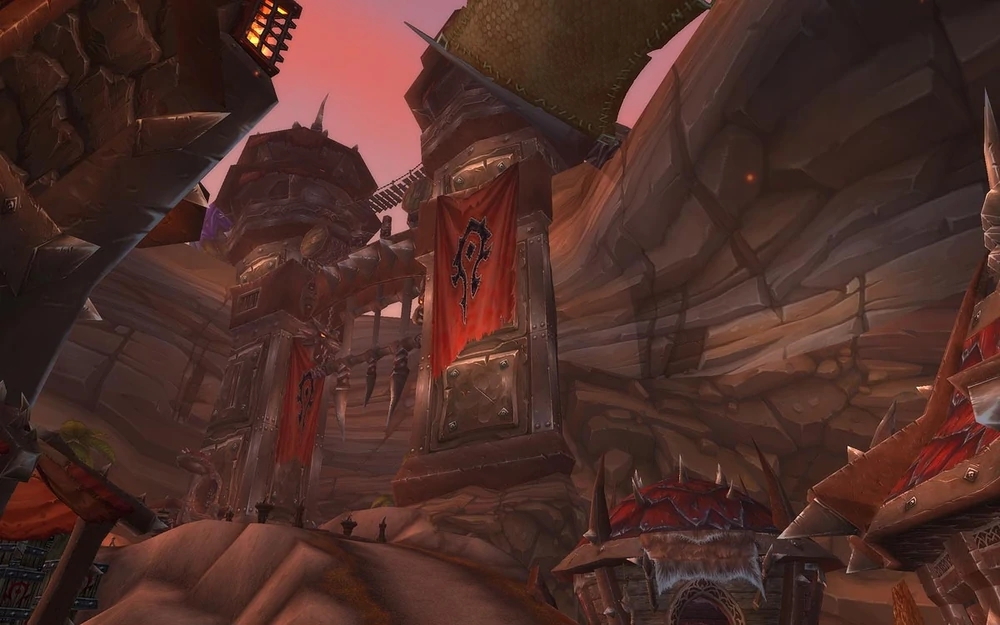

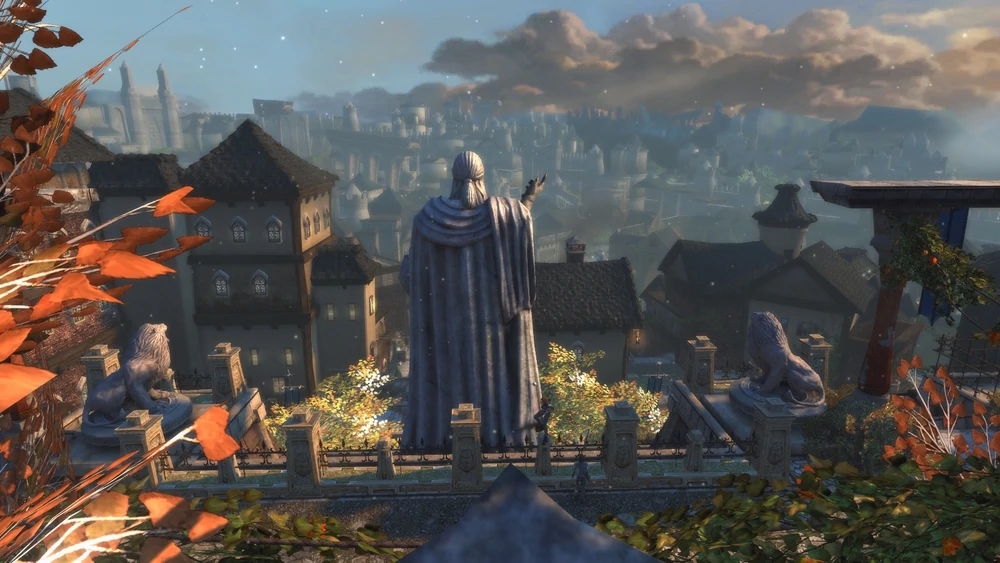

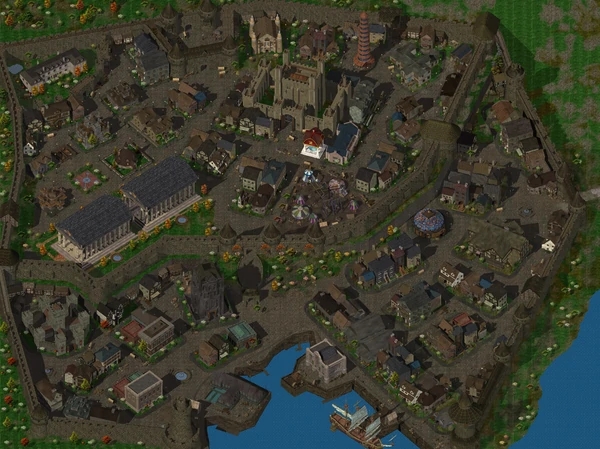
 orrowind
orrowind